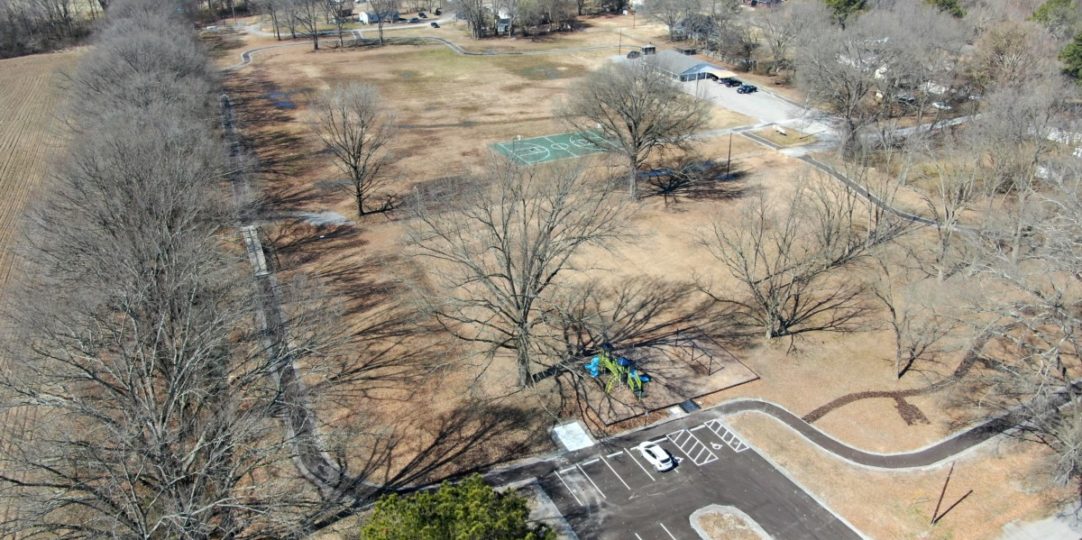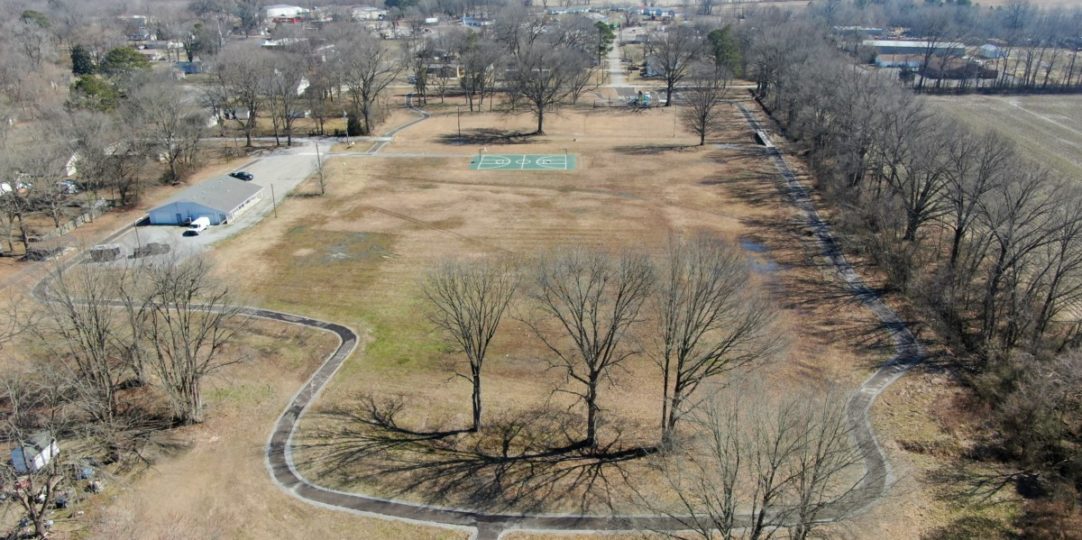Projects • Precinct Park
Precinct Park
Dyersburg, Tennessee
In 2010, the Dyersburg community suffered catastrophic flooding from a historic rain event. Particularly hard hit was the Southtown area of the community, one of poorest parts of the City of Dyersburg. As part of the flood recovery, the City purchased several properties in the area. Recently, the City decided to rebuild the South Precinct in this location via a HUD grant. When the environmental study came back, the area was a mosaic wetland housing crawfish and several trees on the property were a habitat for endangered bats. The property also ended up being under the 100-year flood plain—meaning HUD would not fund a structure development on the property—and disturbing the wetland to elevate the area would mean expensive environmental mitigation efforts would be required.
Following the environmental assessment, the City decided to establish the South Precinct elsewhere, leaving an available site with an old metal building and an adjacent abandoned baseball field. They took a step back to look at the area and how could they use the land with the existing conditions and still meet goals with HUD and CDBG. The City was able to create Precinct Park by combining the the old precinct parcel (which was donated by the County), the previously owned abandoned parcels, and a few newly acquired parcels.
The first step in creating the new park was to take out the old baseball backstop and remove the road—McKee Street —which previously separated the ball field from the precinct and the acquired lots. The design allowed the wetlands to be undisturbed and created a large bioswale to add flood storage. The swale drains at ½ % to promote infiltration. The park is right in the middle of one of the poorest neighborhoods in Dyersburg. They’re outside of the levee system, so flooding is a constant issue in the area. The project added lots of red oak and pecan trees on the acquired lots, in addition to the mature trees. Pecan trees take up more water per day and remove more contaminants than other tree, while offering a large canopy and producing food. Additional trees were also planted in the wetland area that was previously being mowed to help put water back in the groundwater system, filter out contaminants, and reduce the urban heat island effect.
The project added a playground and a small parking lot as well as a walking trail, with a pedestrian bridge over the bioswale, that encircles the entire edge of the park. A handicap accessible picnic table was installed, as was a winding mulch trail with picnic tables along it. The end result was an economically sound project that benefited an under-served portion of the community, giving them a safe and fun place to gather while addressing flooding and drainage concerns that were plaguing the area.
Owner
- City of Dyersburg
Project Completion
- 2020



